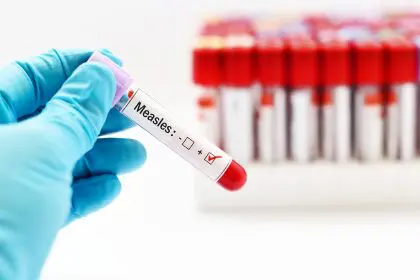Let’s talk about something that might be messing with your brain right now without you even knowing it. Scientists have just dropped some major tea about cadmium, and trust me, it’s not the kind of metal you want in your playlist. This toxic heavyweight has been flying under the radar, but new research suggests it’s been secretly wreaking havoc on our cognitive health in ways that’ll make you want to rethink your daily habits.
Think of cadmium as that toxic ex who just won’t leave you alone, except this time it’s literally getting into your head. Recent studies have shown that this sneaky metal isn’t just passing through your system it’s setting up permanent residence in your brain, and the consequences are frankly terrifying.
The scary truth about who’s most at risk
In a groundbreaking study that followed over 2,000 people for ten years, researchers discovered something wild about this toxic troublemaker. White participants who had more cadmium in their system were twice as likely to experience cognitive problems compared to those with lower levels. But here’s where it gets interesting the same effect wasn’t found in Black participants.
The scientists behind this bombshell aren’t just throwing around theories. They tracked participants using detailed cognitive assessments, essentially giving us a front-row seat to how cadmium might be messing with our minds over time. And let’s just say, the results are more dramatic than your favorite reality TV show finale.
Seven everyday sources of cadmium you’re probably exposed to
- That cigarette break you’re taking might be doing more damage than you think. Every puff is basically sending a personal invitation to cadmium to come wreck your brain cells.
- The air in highly polluted areas could be serving you a toxic cocktail. Living near industrial zones? You might be breathing in more than just city vibes.
- Some of your favorite foods might be grown in contaminated soil. Those leafy greens you’re so proud of eating? They could be serving up a side of cadmium.
- Industrial areas are basically cadmium hotspots. If you live or work near manufacturing plants, you might want to keep reading.
- Your workplace might be exposing you to this sneaky toxin. Certain industries are basically cadmium central, and you might not even know it.
- Certain types of fertilizers used in farming can be loaded with it. That organic produce isn’t looking so clean anymore.
- Even some seafood from polluted waters can pack a cadmium punch. Your favorite sushi spot might be serving up more than just omega-3s.
Why this matters for your brain
Picture cadmium as that uninvited guest who crashes your brain’s party and refuses to leave. This toxic metal doesn’t just show up it sets up camp in your brain, causing all sorts of drama. It messes with your brain’s calcium levels and starts drama with your neurons, basically turning your mind into a battlefield.
The science behind this is actually wild. Cadmium sneaks past your brain’s security system (the blood-brain barrier) and starts causing chaos like it owns the place. It triggers inflammation, oxidative stress, and even tells some of your brain cells to basically give up and die. Not cool, cadmium, not cool at all.
The smoking gun nobody’s talking about
Here’s the tea researchers spilled about why white participants might be more affected. It turns out smoking habits played a major role. White participants in the study were lighting up more frequently, and cigarettes are basically cadmium delivery systems straight to your brain.
But before non-smokers start feeling too smug, remember that secondhand smoke is just as sneaky. Plus, there are plenty of other ways this metal menace can get into your system. It’s like playing a toxic version of hide and seek, and cadmium is winning.
The environmental justice plot twist
Living in certain neighborhoods might put you at higher risk, and it’s not just about lifestyle choices. Lower income areas often face higher exposure to industrial pollution, which means some communities are getting an unfair share of this toxic burden. It’s giving environmental injustice, and we need to talk about it.
This isn’t just about individual choices anymore. We’re talking about systemic issues that affect entire communities. Some neighborhoods are basically getting served extra helpings of cadmium while others get a pass, and that’s not the kind of inequality we should be sleeping on.
What this means for your future
The long-term effects of cadmium exposure are giving scientists major anxiety, and for good reason. We’re talking about potential impacts on memory, thinking skills, and overall cognitive function. It’s like watching your brain age in fast forward, and nobody wants that kind of time travel.
Scientists aren’t done investigating this toxic relationship between cadmium and our brains. They’re calling for more research to understand exactly how this metal is playing mind games with different communities. While they’re working on getting more answers, we all need to stay woke about environmental health risks.
How to protect yourself starting today
Understanding these risks is your first step toward protection. Whether you’re living in an industrial area, enjoying seafood, or trying to quit smoking, knowing about cadmium exposure can help you make better choices for your brain health.
But it’s not just about individual actions. We need to be talking about policy changes, environmental protections, and community-level interventions. Because let’s be real, toxic exposure shouldn’t be a ZIP code lottery.
The bottom line
The science is clear something’s up with cadmium and our brain health, and it’s hitting different communities in different ways. While researchers keep digging deeper into this toxic relationship, we all need to stay informed and aware of what’s going into our bodies and how it might affect our minds.
This isn’t just another health scare story. It’s a wake-up call about how environmental toxins are playing Russian roulette with our cognitive health. The good news? Knowledge is power, and now you’re armed with information about one more way to protect your precious brain cells.
Remember, while this research is giving us major insights into brain health, it’s also highlighting some serious environmental justice issues we can’t ignore. It’s time to get serious about protecting all communities from toxic exposure, not just the ones with fancy air purifiers and organic everything.
Stay woke about your environmental exposure, keep up with the latest research, and maybe think twice about that next cigarette. Your future self’s brain cells will thank you.
Note: This article provides general information and should not replace professional medical advice. Consult your healthcare provider for personalized recommendations.
















